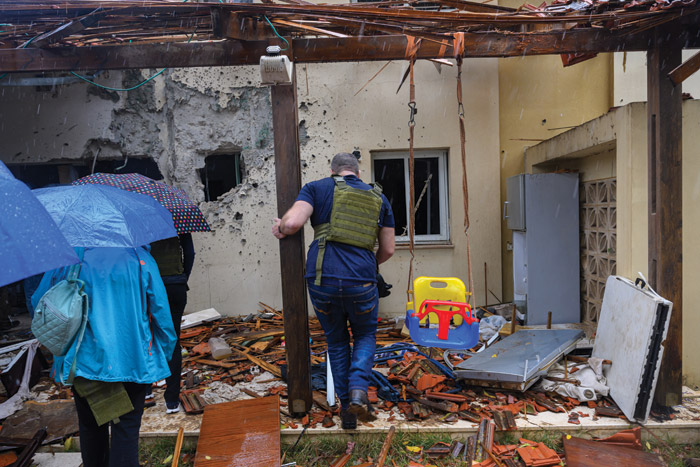
Since Oct. 7, Jews and non-Jews are reeling, trying to understand these difficult times. This is no six-day war. Months after absorbing the bloodiest terrorist attack in its history, Israel is stuck on many fronts. Defense Minister Yoav Gallant warns: “We are being attacked from seven different arenas: Gaza, Lebanon, Syria, the Palestinian territories, Iraq, Yemen, and Iran.” Israel invaded Gaza, foiled an unprecedented Iranian attack, absorbed more than 5,000 Hezbollah rocket launches, and saw tens of thousands of its citizens displaced, north and south, for months. Parts of Gaza are flattened, with hundreds of thousands of Palestinians displaced and thousands killed.
“We are being attacked from seven different arenas: Gaza, Lebanon, Syria, the Palestinian territories, Iraq, Yemen, and Iran.” – Defense Minister Yoav Gallant
Meanwhile, a global movement demonizes Israel’s actions and Zionism, as Israel clashes repeatedly with its allies, including the U.S., regarding military tactics and “day after” strategies. Haters have targeted American Jews viciously and personally. And Israel’s political divisions have resurfaced, especially regarding the heartbreaking hostage dilemma, let alone the character of Israel’s leadership.
Nevertheless, Israel’s military lost far fewer soldiers than experts anticipated fighting an excruciatingly difficult urban war, while killing thousands of Hamas terrorists and destroying tens of thousands of armaments.
Many are still struggling with painful questions about what Israel feels it must do to survive, what kind of Israel and Middle East will emerge and how Israel can restore its international standing.
This is the condensed version of a guidebook articulating answers to basic, pressing questions – while hoping to trigger debates about the ongoing dilemmas facing Israel, the Jewish people and America. It started germinating in November, when the Jewish Journal’s David Suissa reported that a mutual friend suggested an article refuting the Big Lies that started circulating as soon as Hamas invaded. In 36 frenzied hours, I wrote “The Nine Big Lies Against Israel and What They Really Mean.”
Two months later, a friend from Boston described how her peers were struggling to explain Israel’s actions to their co-workers and their kids. Even though, by then, three university presidents had soured everyone on judging events “in context,” I decided to produce a short, substantive guidebook – with facts, figures, and timelines, to put this all in context. This is a sampler of that effort, which I produced with the Jewish People Policy Institute, the Global Thinktank of the Jewish People, available at https://bit.ly/3Lo9mms
Q&A
What happened Oct. 7?
On Oct. 7, 2023, over 3,000 Hamas terrorists invaded Israel from Gaza in “Operation Al-Aqsa Storm.” Thousands of other Gazans followed, including some who had worked with the Israelis they assaulted. The Palestinian marauders killed over 1,139 Israelis and 71 foreigners. They harmed citizens from 30 nations, wounding 4,834, and kidnapping 253 men, women, and children – some dead, most alive.
Hezbollah, a Lebanese terrorist army and political party, started firing rockets from southern Lebanon to help Hamas. Within days, over 150,000 Israelis were displaced from their homes, north and south. On Oct. 17, Iran unleashed its proxies, especially Yemen-based Houthis, targeting the bases America established against Islamists in Iraq, Syria, and Jordan and international freighters in the Red Sea. Responding in self-defense, Israel launched a full-scale war against Hamas in Gaza, while skirmishing with Hezbollah.
Why did Hamas attack?
Hamas is an antisemitic Jihadist movement whose charter vows to “obliterate” Israel, seeking one Jew-free state of Palestine, “from the River to the Sea” – from the Jordan River to the Mediterranean Sea. Israel withdrew from Gaza in 2005 – the Disengagement – uprooting 8,500 Israelis. By 2007, Hamas had seized power in a coup. Since then, Palestinians resented Israel’s defensive blockade, while Israelis resented the ongoing rocket fire from Gaza, which Israel’s disengagement didn’t stop. Pressured by the international community, Israeli leaders started treating Hamas as pragmatic, assuming it preferred governing Gaza to destroying Israel despite its genocidal charter. That concept – conceptzia in Hebrew – lulled Israelis into a false sense of security, which collapsed on Oct. 7.
Why did Israel launch a war that killed and displaced so many civilians?
International law justifies fighting back when hostile neighbors invade. Israel’s war began as a counterattack, repelling the invaders. In the first three days, 382 Israeli soldiers were killed, along with 59 police officers, 13 medics, and dozens of civilians who mobilized immediately. Israel then felt compelled to degrade Hamas’ military capabilities and defeat it politically, to avoid a recurrence. Hamas had spent years hiding its weapons and headquarters in hospitals, kindergartens, mosques, apartments, and hundreds of miles of tunnels, some seven stories deep. The Hamas terrorists hiding behind civilians in this small, fortified territory caught many Gazans in the crossfire. Israel’s unprecedented efforts to protect civilians kept the ratio of civilians killed to each terrorist killed far lower than America’s ratios of 4 to 1 or more in Iraq and Afghanistan. Every life is sacred. Many Israelis regretted the hard choices their soldiers were making – and the high cost the Hamas invasion imposed on both sides.
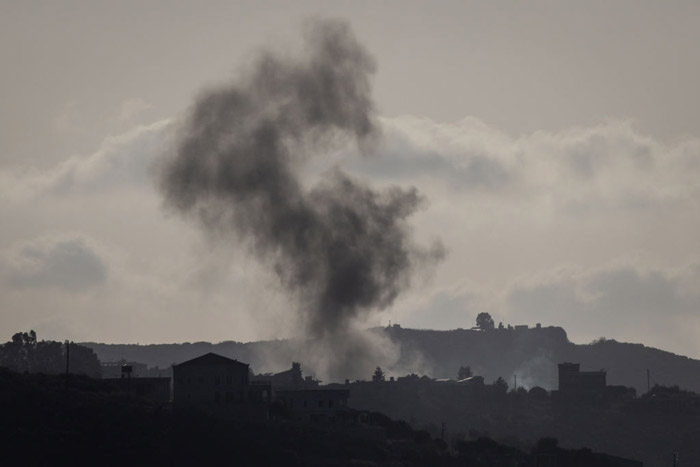
Why did events in Israel disrupt so many lives thousands of miles away?
Oct. 7 was cataclysmic. Israel suffered the highest per capita loss of any country ever from a terrorist attack. The scale of the murders; the viciousness of the rapes and maimings; the assaults on the elderly, pregnant women, little girls and baby boys, commanded attention worldwide. Many Palestinian terrorists recorded their crimes, broadcasting footage online. Such a catastrophic Islamist assault anywhere would have commanded attention. But Israel is often in the news. Jews – and citizens in most Western democracies – care about the Jewish state. Simultaneously, a well-funded pro-Palestinian network targets Israel obsessively. Even before Israel counterattacked, these agitators blamed Israel for the attacks, unleashing waves of Jew-hating assaults that continue today.
Even before Israel counterattacked, pro-Palestinian agitators blamed Israel for the attacks, unleashing waves of Jew-hating assaults that continue today.
Israel’s just war to degrade Hamas’ military power in Gaza slogs on. The threats from Hezbollah to Israel’s north, and from the Houthis to the international shipping community, intensify – Hezbollah rockets have destroyed over 500 Israeli homes. Iran’s responsibility for these events becomes clearer daily. And, globally, the assault on Israel, Zionism, and Jews keeps disrupting campuses, legislatures, and public squares.

Why did Iran attack Israel on April 13?
Iran’s leaders justified their missile barrage of 320 rockets against Israel by emphasizing the killing in Syria of eleven Iranians, including two generals. That misses the context. Iran’s Islamic Republic is obsessed with destroying the Jewish State. Israel and the Iranian regime have skirmished in the shadows for decades. One of Iran’s dead generals, Mohammad Zahedi, helped orchestrate Hamas’ assault on Oct. 7, and approved the subsequent attacks against Israel launched by Hezbollah, the Houthis and others in the “Axis of Resistance.” Israel’s remarkable success, with its allies, in downing most of the missiles neither diminishes the scale of the attack nor excuses its lethal intentions.
Chapter 1 – Oct. 7: What Happened?
Oct. 7, 2023 was the bloodiest day in Jewish history since the Holocaust. Shouting “slaughter the Jews,” Hamas terrorists murdered Israeli-Arabs, Bedouins, Thai and Nepalese agricultural workers, simply for associating with “the Jews.”
Israel’s counterattack burgeoned into this long, difficult war to destroy Hamas’ capacity to repeat this massacre, free 253 hostages, crush Hamas’ governing grip over Gaza, and deter other enemies from considering a similar invasion – which Hamas officials vowed to replicate “a second, a third, a fourth time.” With Hamas embedded among Gaza’s civilians, many civilians caught in the crossfire died, regrettably, along with many terrorists hiding in civilian clothes.
On Oct. 7, protests with cries of “Death to the Jews” erupted worldwide – while the slaughter continued, long before Israel counterattacked. After Israel entered Gaza on Oct. 27, and the Palestinian death toll mounted, protests worldwide intensified. Posters proclaimed “Rape Is Resistance,” “Babies Are Occupiers Too” and “Free Palestine by Any Means Necessary.” Anti-Jewish incidents soared – ranging from harassment to graffiti to occasional beatings. By the spring, over 130 campus encampments left two of three Jewish students at those universities feeling threatened, having heard anti-Jewish not “just” anti-Israel and anti-Zionist cries, as well as personal threats such as “we know where you live” and “Zionists must die.”
The anti-Israel mobs often attacked Israel’s allies too, burning American flags in Los Angeles and British flags in London. They shouted “F— the Jews” outside the Sydney Opera House. They disrupted the Rockefeller Center Christmas tree lighting ceremony, the Toronto mayor’s New Year’s ice-skating party, traffic to LAX during Christmastime, and multiple commencement ceremonies. They screamed outside the Memorial Sloan Kettering Cancer Center and splashed red paint on the White House gates.
Experts will long debate “how did it happen,” but the scale and success of Hamas’ Oct. 7 massacre raises a second question: How did Israel repel most of the invaders by nightfall, especially because it took hours before so many army units arrived?
How did Israel repel most of the invaders by nightfall, especially because it took hours before so many army units arrived? It’s a less popular story because it’s not about Jews bleeding, but Jews fighting back.
It’s a less popular story because it’s not about Jews bleeding, but Jews fighting back. Nevertheless, on Oct. 7, citizens, police officers, and soldiers, at home and on base, fought back fiercely. These Citizen Commandos not only saved countless lives. These Jewish, Arab, Bedouin, and Druze Israelis saved Israel.
If Oct. 7 represents Hamas’ massacre, Oct. 7.2 represents Israel’s counterattack. That story is not about Jewish powerlessness echoing pogroms or the Holocaust. These heroic tales returned Israel to its Zionist trajectory. October 7 and 7.2 added more chapters to Zionism’s rollercoaster tale about Jews redeeming their homeland, despite cruel neighbors, and how Israelis learned to fight when necessary but to live, build, and rejoice always.
If Oct. 7 represents Hamas’ massacre, Oct. 7.2 represents Israel’s counterattack. That story is not about Jewish powerlessness echoing pogroms or the Holocaust. These heroic tales returned Israel to its Zionist trajectory.
When the politicians failed and the IDF faltered, the people stepped in. A consensus coalesced that day. For Israelis, victory does not just include breaking Hamas and restoring deterrence – but rebuilding the pastoral south, which was safe and blooming, in undisputed territory behind pre-1967 borders, until Israel disengaged from Gaza in 2005. Omri Bonim, one of many Kibbutz Rambos who saved his community, Reim, says, “when we all return, we will rebuild it all, and we will show the world how beautiful our community is.”
Chapter 2 – How Did Gaza Become Such a Threat to Israel?
On Oct. 7, Hamas’ invasion shocked Israel. While complaining that Israel’s blockade strangled Gazans, Hamas amassed over 20,000 rockets and built a maze of tunnels with 5,700 shafts, crisscrossing up to 450 miles in an area 25 miles long. A Hamas official, Mousa Abu Marzouk, told Russian TV that Hamas reserved the tunnels for Hamas fighters: “it is the responsibility of the United Nations” and “the occupying forces,” meaning Israel, to protect Gazans. This lethal, urbanized fortress mocked the peace President George W. Bush and the international community promised in 2005 – if only Israel withdrew completely from Gaza, which it did.
Gaza: A Short History
In the Bible, Samson was imprisoned and died in Gaza, “Azzah” meaning “strong city.”
On Nov. 29, 1947, the League of Nations’ successor, the United Nations, proposed a compromise between the Palestinian Jews and the Palestinian Arabs who kept clashing. U.N. General Assembly Resolution 181 again recognized Jews’ right to their homeland in the Land of Israel – which the Romans renamed Palestine, trying to strip the Jews of their ties to the land. The resolution partitioned the land, incorporating the “Gaza Strip” into the “Independent Arab State” the U.N. proposed alongside a Jewish State.
Many Jews anguished over dividing their homeland and internationalizing their capital, Jerusalem. But, their future prime minister, David Ben-Gurion, insisted that half a loaf is better than none – especially after the Holocaust. Most Zionists accepted the compromise. Most Arab leaders rejected it. These radicals, spurred by the Grand Mufti of Jerusalem Haj Amin al-Husseini, squelched Arab moderates. Those Arab extremists left “Palestine Betrayed,” the historian Efraim Karsh argues.
The Arab rejection – and mass invasion when Israel declared its independence in May 1948 – invalidated the U.N. compromise. The CIA World Factbook notes: “Following the 1948 Arab-Israeli War, Egypt administered the newly formed Gaza Strip,” which Egypt carved out of the territory covered by the rejected partition plan.
Following the war, 160,000 Palestinian Arabs expanded Gaza’s population to about 240,000 inhabitants. Some fled Israel voluntarily – expecting to return triumphantly after the Jews lost. Some fled in fear. Some fled after being expelled. Similarly, on the West Bank of the Jordan River, in the biblical regions of Judea and Samaria, which Jordan seized, the population jumped from about 420,000 to 764,900.
Egypt mostly ruled Gaza from 1949 through 1967 – without international legitimacy. That left Israel the right to establish a buffer zone in that territory, because Jews still have rights to settle there under the British Mandate.
In 1967, following its Six Day War of self-defense against invading Egyptian, Jordanian, and Syrian armies, Israel seized Gaza and the Sinai Peninsula from Egypt. Egypt estimated Gaza’s population at 442,100 people. Most Israelis were wary of this hostile population. Israel’s Prime Minister Levi Eshkol called Gaza “a bone stuck in our throats.”
The Egyptians didn’t want Gaza either. During the Camp David peace negotiations between Israel and Egypt in 1978, Egyptian President Anwar Sadat demanded the Sinai back, without Gaza. The treaty left Gaza for the Palestinians and Israelis to manage … or fight over.
The Israel-Egypt treaty of 1979 established an 8.7-mile-long buffer zone for Israel’s military to patrol along the newly drawn Egyptian border. The IDF hoped this “Philadelphi Corridor” would stop smuggling between Egypt and Gaza.
When an IDF truck driver accidentally ran over four Gazans in December 1987, Palestinians rioted. Known as the “Intifada,” the shaking off, in Arabic, this upheaval spread. It lasted until 1991. The violence spawned a radical Islamist movement, inspired by the Muslim Brotherhood — Hamas, the Arabic acronym for “the Islamic Resistance Movement.”
Hamas’ founding charter vowed “to raise the banner of Allah over every inch of Palestine,” from the Jordan River to the Mediterranean Sea. The preamble promises to “obliterate” Israel.
In 2004, President George W. Bush encouraged Israeli Prime Minister Ariel Sharon to disengage from Gaza, writing: “Palestinians must undertake an immediate cessation of armed activity and all acts of violence against Israelis anywhere, and all official Palestinian institutions must end incitement against Israel.” Bush affirmed Israel’s “right to defend itself against terrorism.” And the president vowed to launch an international effort “to build the capacity and will of Palestinian institutions to fight terrorism, dismantle terrorist organizations, and prevent the areas from which Israel has withdrawn from posing a threat …”
In August 2005, Israel withdrew from Gaza, dismantling all 21 Jewish communities, uprooting 8,500 Israelis. Israel was bitterly divided.
As a free Gaza pounded Israel with rockets, cries of “occupation” and “blockade” continued. In October 2006, an International Herald Tribune reporter, Patrick Seale, mocked Israel’s fight against the Gazans’ Qassam rockets. “These are highly irritating but largely ineffectual weapons,” he scoffed, ignoring Israelis’ trauma, while not acknowledging that America would never tolerate such assaults. Seale accused Israel’s Chief of Staff, Dan Halutz, of “making lurid statements to the effect that Hamas and other Palestinian groups have smuggled millions of dollars’ worth of weapons into Gaza from Egypt – including antitank and antiaircraft weapons as well as tons of explosives – and have built a whole underground city to store their arsenal.”
Halutz underestimated. Still, three new Gaza-related claims against Israel gained currency. Palestinians labeled Gaza the world’s largest open-air prison, belying its shopping malls, its mansions, its border with Egypt, its seashore which could have made Gaza a Middle Eastern Riviera. Second, reporters sitting in skyscrapered jungles like Manhattan, with a population density of 73,000 residents per square mile or downtown Los Angeles, with a density of 37,009.8, labeled Gaza, with its 14,000 person-per-square-mile density, “one of the most densely populated places on earth.”
Finally, whenever Israel defended itself, critics cried “genocide,” which means the mass targeted destruction of a people. Yet Gaza’s population almost doubled between 2000 and 2024 while the young age average of Palestinians in all the territories — under 20 — suggested many more births than deaths.
In June 2007, Hamas violently seized control of Gaza, effectively seceding from the PA.
With Hamas crushing dissidents, the international community nevertheless pressured Israel to adjust. After becoming prime minister again in 2009, Benjamin Netanyahu assumed that encouraging Hamas rule in Gaza would weaken the PA and minimize international pressure for a Palestinian state.
Israeli peaceniks and most Western diplomats insisted that Israeli moderation would encourage Hamas’ pragmatism. Robert Malley, a Democratic foreign policy guru, claimed in 2006 that “Hamas wants the ability to govern.” Malley often led the chorus demanding Israel “cease fire” whenever it defended itself.
Meanwhile, Hamas built military bases under hospitals, amassed weapons in mosques and kindergartens, and masked its war preparations behind ambulances, U.N. workers, and UNRWA facilities. And it indoctrinated Gazans, from childhood, to hate “the Jews.” Such totalitarian terrorism flourished, especially after Israel withdrew. Israel wavered, imposing a blockade to stop the arms flow, while allowing humanitarian materials and Qatari cash into Gaza – which Hamas stole. Periodically, tensions erupted into mini-wars. Israeli authorities called these clashes “mowing the lawn,” assuming that periodic military pushback would constrain this “pragmatic” Hamas.
This Israeli doctrine developed under insistent calls for Israeli “ceasefires,” whenever it tried dismantling Hamas’ infrastructure – especially in 2008-2009, 2012, 2014, and 2021. Even after Oct. 7, few American policymakers acknowledged their failures. By contrast, former Secretary of State Hillary Clinton admitted in November: “Remember there was a ceasefire on Oct. 6 that Hamas broke by their barbaric assault on peaceful civilians … Hamas has consistently broken ceasefires over a number of years.”
Hamas’ Ali Baraka boasted to Russia Today TV on Oct. 8, as translated by the Middle East Media Research Institute (MEMRI): “We made them think that Hamas was busy with governing Gaza, and that it wanted to focus on the 2.5 million Palestinians [there]. All the while, under the table, Hamas was preparing for this big attack … The thing any Palestinian desires the most is to be martyred for the sake of Allah, defending his land.”
Today, most Israelis realize that, just as many Palestinians exploited the Oslo Peace Process to arm themselves in the West Bank, Gaza’s terrorist groups exploited the disengagement to threaten Israel. Claiming they were “occupied” while controlling territory is as logical as being “blockaded” while importing massive weaponry.
Chapter 3 – The War in Israel: What Are They Thinking?
During the 2014 clash, a reporter interviewed Israel’s legendary writer Amos Oz, a proud leftist, about Israel’s debate then to invade Gaza. First, Oz asked, “What would you do if your neighbor across the street sat down on the balcony, put his little boy on his lap and started shooting machine-gun fire into your nursery? Question 2: What would you do if your neighbor across the street dug a tunnel from his nursery to your nursery in order to blow up your home or in order to kidnap your family?”
Nine years later, the dilemmas were tougher. But many Israelis blamed Oct. 7 on their failure to eliminate the threats earlier. Eleven years’ worth of “humanitarian ceasefires” made the inevitable far more costly, when Israel invaded after Oct. 7’s bloodbath to restore Israelis’ sense of security.
Netanyahu eventually articulated three war aims which “would take many months … One, destroy Hamas. Two, free the hostages. Three, ensure that Gaza never again poses a threat to Israel.” That last goal required “durable demilitarization, which can only be carried out and sustained by Israel,” and “deradicalization” – a daunting challenge with much of the world pro-Hamas.
President Joe Biden supported Israel’s aims – especially initially. On Oct. 10, shocked by the “pure unadulterated evil … unleashed on the world,” the Democratic president defined Hamas as a “terrorist organization … whose stated purpose for being is to kill Jews.” Acknowledging that the “attack has brought to the surface painful memories and the scars left by millennia of antisemitism and genocide of the Jewish people,” Biden proclaimed: “We stand with Israel. And we will make sure Israel has what it needs to take care of its citizens, defend itself, and respond to this attack.” Sending the USS Gerald R. Ford, America’s leading aircraft carrier, and needed munitions – Biden told Netanyahu: “If the United States experienced what Israel is experiencing, our response would be swift, decisive, and overwhelming.”
President Biden is also “heartbroken by the tragic loss of Palestinian life.” He distinguishes between terrorists who target civilians and democracies which don’t. But, sadly, Gaza now illustrates – this is what “overwhelming” looks like.
Israel and America differ regarding “the day after.” Focused on defeating Hamas, the Israeli government dodged politically divisive “day after” questions ranging from how Israel could ever work with Palestinians to how Gazans can access food and water, let alone rebuild. Israel’s sidestep frustrated the international community. It risked making the war look vengeful rather than a disciplined unleashing of tremendous firepower, seeking stability for Palestinians not just Israelis.
Once again, Israel showed greater tactical sophistication on the battlefield than strategic vision in imagining how to break the impasse.
Israel did not enter Gaza on Oct. 8. Anticipating traps, Israel began bombing targets, while training reserves. Sacrificing military advantage to minimize civilian casualties, Israel telegraphed its opening moves, advising 1.1 million Gazans to head south. Israeli soldiers distributed 1.5 million pamphlets, made six million phone calls, and sent 6 million warning texts to Gazans. Such attempts to save lives in enemy territory were unprecedented, as was providing humanitarian aid to the enemy who had just slaughtered their civilians, creating four-hour pauses in the fighting, distributing maps, and providing a humanitarian escape corridor for civilians – and disguised terrorists. John Spencer, a retired major specializing in urban warfare studies at West Point marveled: “No military has ever done this in urban warfare history.”
U.N. experts estimate that in urban warfare, 10 civilians are often killed for every combatant. That makes Israel’s far lower ratio, nearly one-to-one, in dense, three-dimensional urban warfare, remarkable. So many deaths, including thousands of women and children, remains horrific. Nevertheless, the war revealed Israeli discipline, precision, and ethics.
U.N. experts estimate that in urban warfare, 10 civilians are often killed for every combatant. That makes Israel’s far lower ratio, nearly one-to-one, in dense, three-dimensional urban warfare, remarkable.
Just War theory defines the “right to go to war” and the “right conduct in war.” Having been attacked mercilessly, most Israelis agreed that Hamas is responsible for every casualty, every disruption since Oct. 7.
In “Just and Unjust Wars,” the philosopher Michael Walzer imagines a “sliding scale … the more justice, the more right.” Many would add: And the more might you’re justified in unleashing.
In assessing “right conduct,” issues become murkier – especially in urban warfare. Ethical armies distinguish civilians from combatants, fight proportionally, and only attack legitimate targets. But the moral dilemmas are constant. Consider the case of Yonadav Levenstein, killed by a sniper who popped out of a building Israel hadn’t knocked down. Was the IDF’s moral responsibility to the apartment building’s inhabitants, many of whom were hostile – or to protect Yonadav and his comrades?
Yet without holding Hamas to any standards, many people worldwide attacked Israel for violating these civilizational norms. Israel acted more ethically than many democracies had – while being held to standards no democracy could meet in similar circumstances.
Yet without holding Hamas to any standards, many people worldwide attacked Israel for violating these civilizational norms. Israel acted more ethically than many democracies had – while being held to standards no democracy could meet in similar circumstances.
Democracies deploy awful firepower against awful enemies. For example, in 2016, when President Barack Obama authorized America’s attack on ISIL the Islamist Jihadist group in Iraq, over 10,000 civilians died in the nine-month battle to free Mosul from the Islamic State. Unlike Gazans with Hamas, most civilians there opposed ISIL. The U.S. under Obama undercounted the “collateral damage” at first – until forced to acknowledge it.
Obama defined America’s priority as keeping the American people safe. He recognized ISIL’s desire to “kill as many Americans as they could if we did not stop them first. So this is a just war – a war waged proportionally, in last resort, and in self-defense.” Calling civilian deaths “heartbreaking tragedies,” he nevertheless concluded that “To do nothing in the face of terrorist networks would invite far more civilian casualties … So doing nothing is not an option.”
Israelis still embrace their “purity of arms” code, reflecting Zionism’s dream of perfecting the Jewish soul and improving the world while defending Jewish bodies. Many democratic armies study Israel’s moral doctrines and restraint toward civilians.
The double standard expecting Israel to fight an immoral enemy with restraints no democracy would accept fueled the decades-long Arab propaganda campaign delegitimizing Israel.
Echoing centuries-old antisemitic tropes stereotyping Jews as all-powerful and all-evil, critics ignored that Hamas attacked Israel, then Hezbollah started bombing it from the north.
Since withdrawing from Gaza, Israel acted with restraint, tolerating the intolerable, as Hamas built its arsenal. Finally, without denying the complexity, admitting that its justifications are ugly and actions often uglier, Israel acted decisively.
Similarly, the 2006 Second Lebanon War ended with U.N. Security Council Resolution 1701, implementing a cease fire, and banning Hezbollah weapons south of the Litani River, 18 miles from Israel. Yet, since then, Hezbollah has amassed over 150,000 rockets, and filled southern Lebanon with killers ready to invade Israel, who shoot rockets daily, wreaking mass destruction.
Most Israelis regret what their kids had to do to reestablish their sense of safety. But they recognized this Hamas war as one of “ein breira,” no choice. Without apologies, and without Western approval, if necessary, Israel decided to do whatever it takes to end the supreme emergency Hamas’ invasion caused.
Most Israelis regret what their kids had to do to reestablish their sense of safety. But they recognized this Hamas war as one of “ein breira,” no choice. Without apologies, and without Western approval, if necessary, Israel decided to do whatever it takes to end the supreme emergency Hamas’ invasion caused.
Ultimately, Israelis must fight as morally as possible, to satisfy their own consciences, not to please the world. The IDF’s main mission remains winning the war by dislodging Hamas.
Chapter 4 – The Backlash: What Are They Thinking?
On Oct. 7, most Jews worldwide had a sick feeling in the stomach. Instantly identifying with the Israelis fighting for their lives, they recognized how the viciousness shared online echoed throughout Jewish history. Call that realization a peoplehood moment.
Many Jews and Israel supporters mobilized. They texted Israeli friends. They doomscrolled, following the news obsessively. They raised money – over 1 billion dollars in October in America alone. They protested – joining America’s largest pro-Israel gathering ever, in November, 290,000 strong. Some lost friendships or Instagram followers. Call that activism, that proactive response, that resistance to Jew-hatred — Zionist movements.
Israelis experienced parallel peoplehood moments – the solidarity forged by recognizing the murderers’ zeal as anti-Jewish, not “just” anti-Zionist. And Israelis’ Zionist movements countered the assault immediately– fighting back heroically.
Increasingly, however, Diaspora Jews felt caught between powerful forces. First, Israel was fighting tough foes including Iran, 1,000 miles away, Hezbollah in the north, and Palestinian terrorists in the territories, not just Hamas. Many Jews stayed stuck in Oct. 7’s trauma, as Israeli casualty-numbers mounted, and Hamas kept holding – and abusing – hostages. Second, the Gaza warfare was bloody, difficult, heartbreaking. The justifications for Israel’s actions, while standard among democratic militaries, sounded heartless on social media. Finally, the obsessive coverage of Gaza, along with the pro-Palestinian protests, created a Sanctimony Cyclone, a storm of accusations, exaggerations, lies, and sweeping repudiations trying to make Israel, Zionists, Jews – and their supporters – radioactive.
Objectively, there has been a disproportionate fascination with this war. In the first six months after Oct. 7, 2023, the New York Times published 4,191 articles about the Gaza War. That compared to 80 articles about the American-led battle to free Mosul over nine months in 2016-2017, 198 articles about the Tigray War in Ethiopia, which killed 600,000 in a year, and 5,434 articles during the first 13 years of Syria’s civil war.
Most Americans rallied around their Jewish friends, the embattled Jewish state, and President Biden. A December Harvard CAPS Harris Poll found 73% of Americans branding Hamas’ massacre “genocidal,” with 84% calling it a “terrorist attack,” and 81% supporting Israel over Hamas. Surprisingly, 69% recognized that “Israel is trying to avoid civilian casualties” in Gaza – defying the media exaggerations demonizing Israel’s self-defense campaign.
These poll numbers echoed Gallup polls over 20 years showing consistent support for Israel, between 70% and 80% — defying the hysterical headlines.
A small group of anti-Jewish anti-Zionists dominated the headlines. It’s a structural problem – extremists command attention. And there’s a passion gap. Too many decent, hard-working, pro-Israel Westerners, are passive. This Silenced Majority made it too easy to overlook the bipartisan consensus recognizing that Israel and Western democracies share common values, interests, challenges, enemies, and a common fate.
Jews were betrayed by radicals’ thuggish delight; organized feminism’s silence; illiberal liberals’ moral confusion, and the atmospheric disturbance triggering the Sanctimony Cyclone, the remote-control morality of those insulated from Israel’s difficult dilemmas. It’s the Triple-Double-Cross: These fanatics betrayed the Jews – again; their liberal ideals — again; and themselves, their core identities.
Oct. 7 confirmed that Jew-hatred, right and left is evil. The violence also blurred anti-Zionism with antisemitism. Hamas harnessed traditional antisemitism to intensify its anti-Zionism, while pro-Palestinian thugs harnessed critiques of Israel to justify traditional Jew-hatred.
Epilogue – The Lessons of April 13
Chronicling the Iranian regime’s 45-year obsession with Israel, and its use of “the Zionists,” “the Jews,” and “America,” as the enemies every dictatorship seeks, requires another guidebook. But the unprecedented barrage of 320 missiles the Iranian theocrats launched against Israel on April 13, illustrates some recurring themes since Oct. 7
• Israel is fighting a multi-front war against Jihadists who violate civilizational norms in targeting Zionists, Jews, and the Jewish State, Israel.
• These Jew-haters are anti-American and illiberal, repudiating fundamental Western ideals.
• No matter what kind of military assault Israel endures, even many of its friends hold Israel to a standard no other country is held to, demanding “restraint” and “take the win” before Israel even counterattacks.
• The anti-Zionist propagandists’ war of words encourages bloody wars targeting every innocent Israeli. The defense Israel and its allies mounted against Iran saved countless lives, although missile shrapnel gravely injured a 7-year-old Bedouin girl, Amina al-Hassouni.
• Nevertheless, Israel is neither helpless nor alone. On April 13, Israelis once again saved Israel – this time with all systems working magnificently, from the intelligence community to the high-tech defenses to Israel’s courageous pilots and drone operators. Meanwhile, the IDF’s cooperation with its American, European, Jordanian, and Saudi Arabian partners generates hope.
Such international synergy suggests we will win this civilizational battle – and, with vision, grit and moral clarity, emerge from these dark days with the global forces of enlightenment strengthened, now including more and more Arab brothers and sisters.
Gil Troy is a Senior Fellow in Zionist Thought at the Jewish People Policy Institute, and as a volunteer chair Taglit-Birthright Israel’s International Education Committee. His next book, “To Resist the Academic Intifada: Letters to My Students on Defending the Zionist Dream” will be published this fall. Find a full copy of this Guidebook at https://jppi.org.il/en/

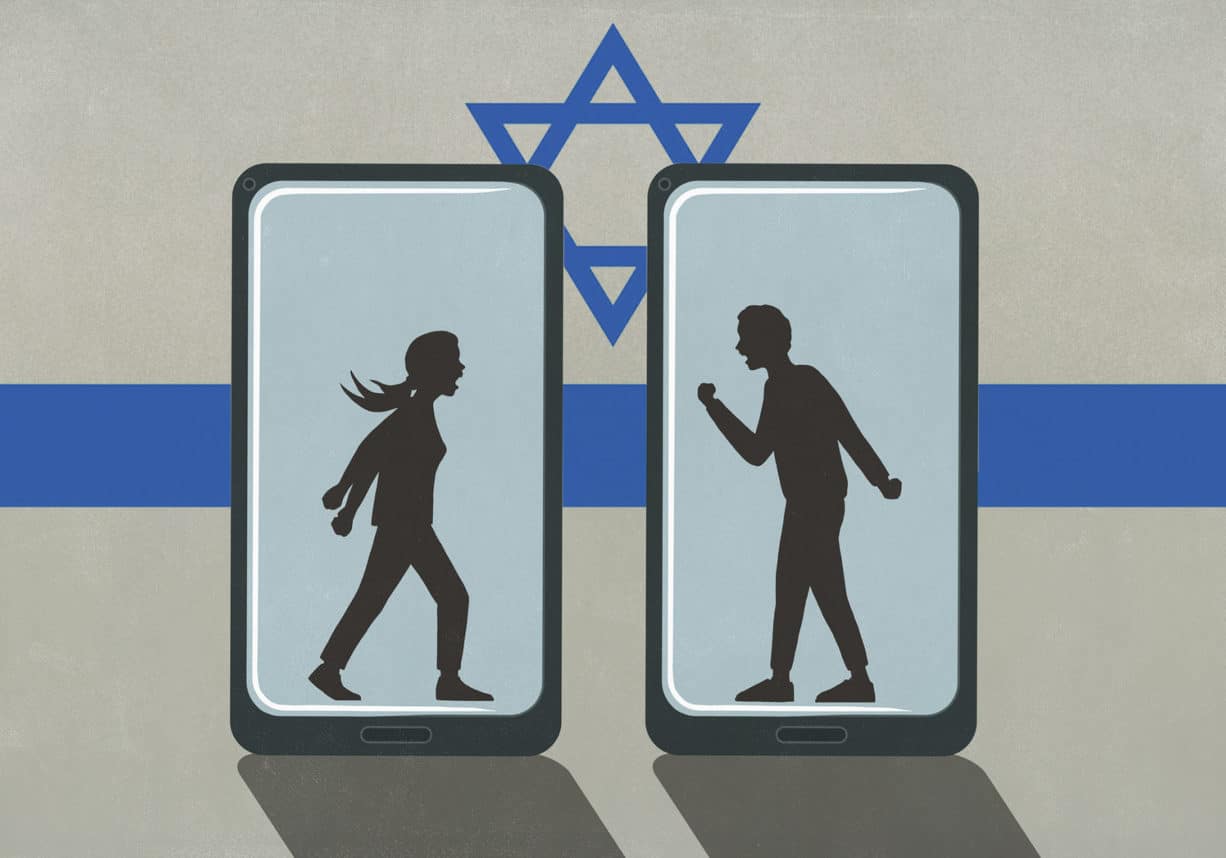


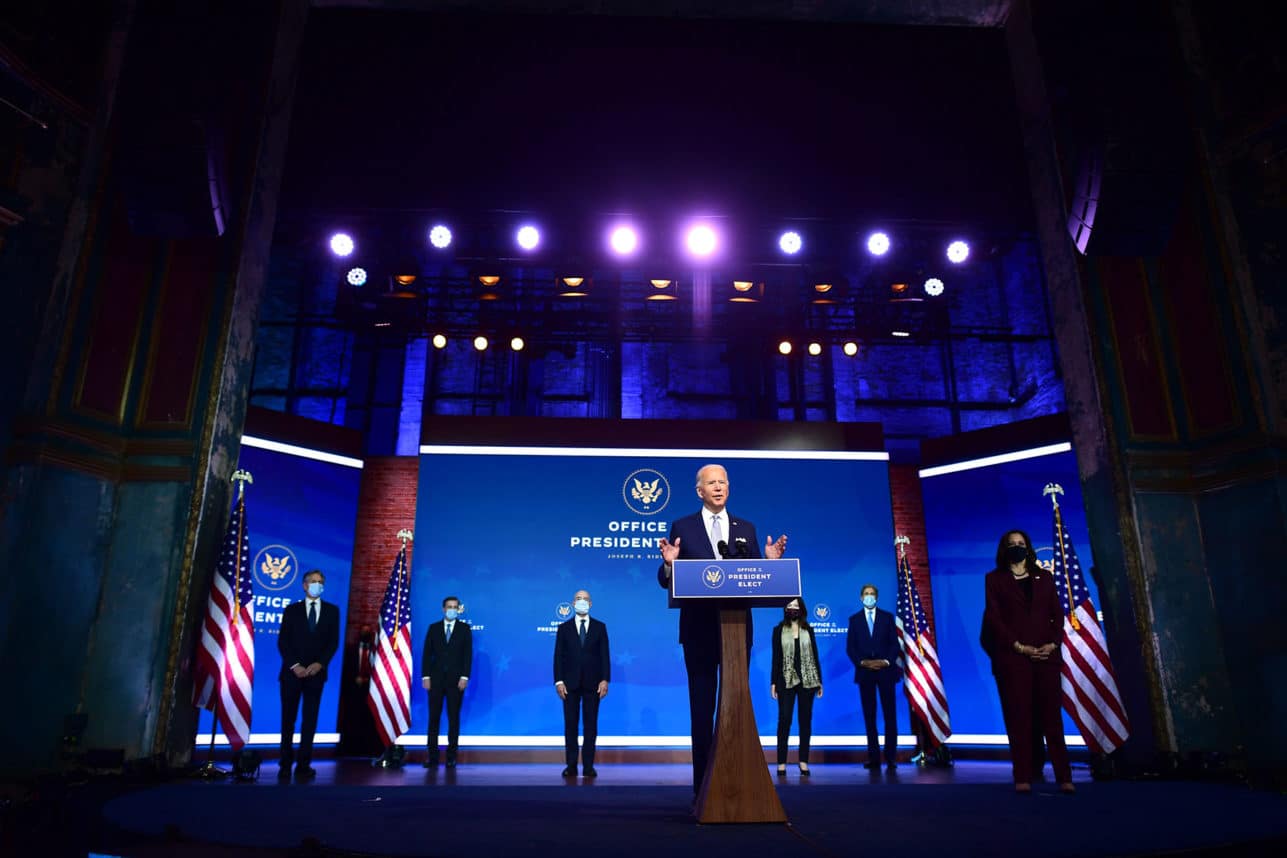



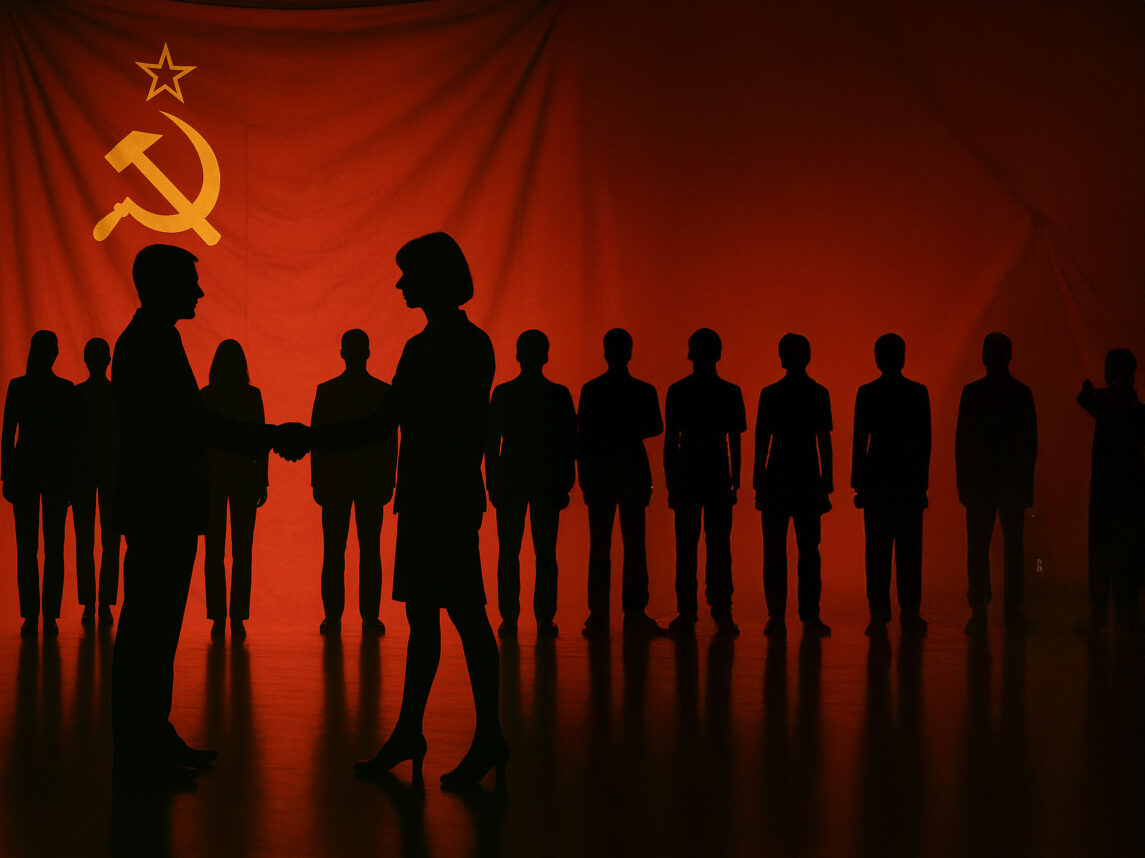

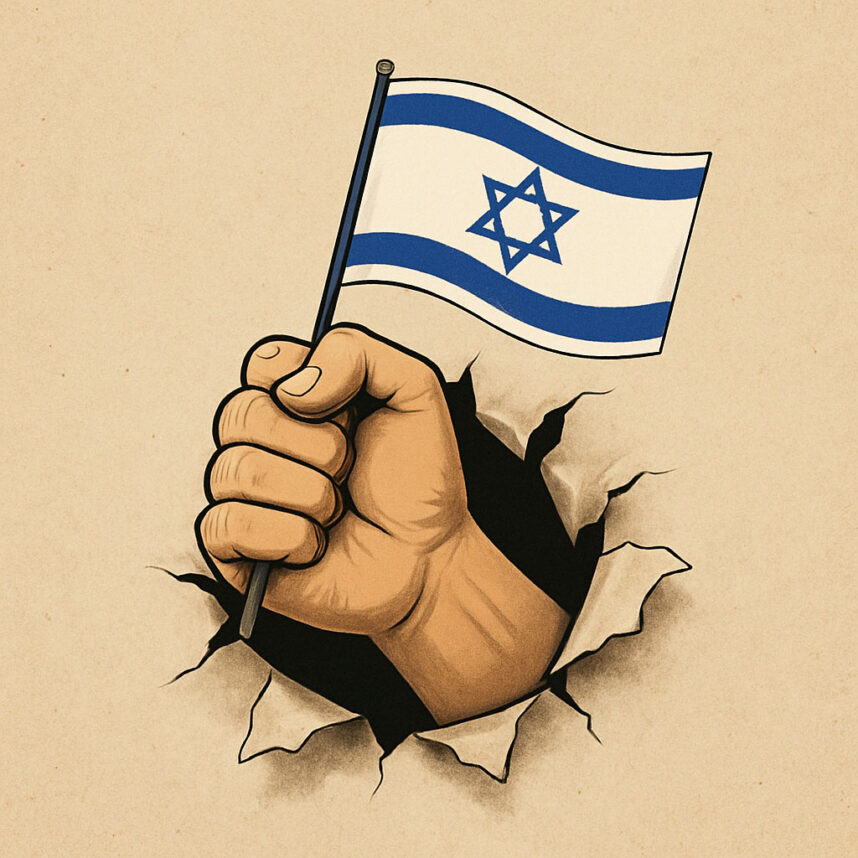





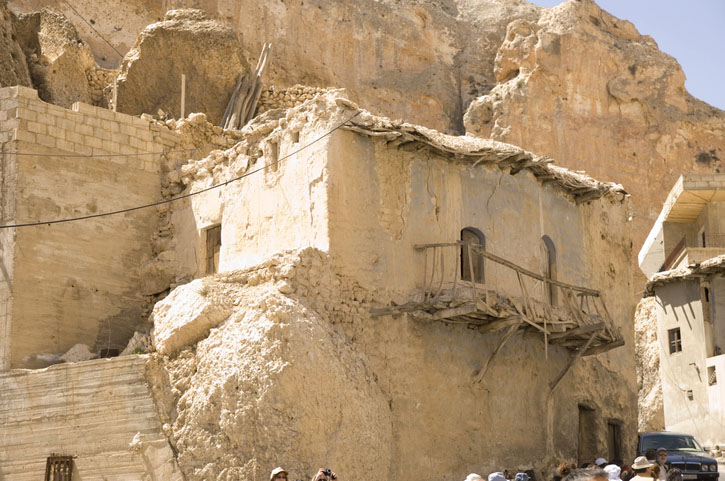







 More news and opinions than at a Shabbat dinner, right in your inbox.
More news and opinions than at a Shabbat dinner, right in your inbox.